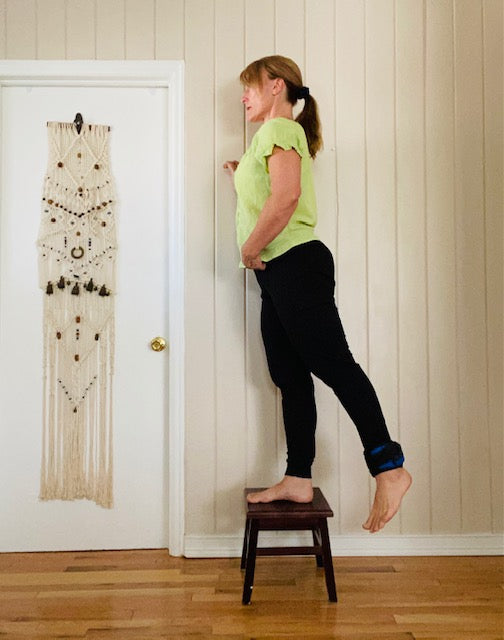Trochanteric bursitis is a painful condition that occurs in both the athletic and in the general population. Factors that increase the risk of development of trochanteric bursitis are over training, leg length discrepancy, excessive pronation, a wide pelvis and running on hard surfaces and/or off camber trails.
Trochanteric bursitis has a very distinct pain pattern as seen by the picture below. (small purple circle at the outside of the hip). There are a number of other issues that can cause lateral hip pain so proper diagnosis by your medical professional is necessary (the large pink teardrop indicates radicular pain symptoms from the spine). Inside hip pain is generally not trochanteric bursitis but possibly a labral or muscular tear.

TIPS to decrease pain with trochanteric bursitis:
1. Stop running/hiking/walking and especially so if on concrete or trail running/hiking on off camber/rocky trails.
2. Orthotics and/or heel lift if flat feet and/or leg length discrepancy is present.
3. Strengthen gluteus medius and other gluteal muscles to decrease compression at hip joint.
4. Lengthen the muscles and fascia surrounding the outer hip.
5. NSAIDS as recommended by your medical provider
6. Avoid sleeping on your painful side and use a pillow between your knees while sleeping on your non-painful side (this helps corrects a wide pelvis - while sleeping)
Weakness in gluteus medius is usually an issue contributing to trochanteric bursitis. The picture below demonstrates the close relationship of the gluteus medius and the trochanteric bursa.

Often hip abduction (lying on your non-painful side and lifting the uppermost leg) is given as an exercise BUT often this exercise will cause pain. This is because pain is a muscle inhibitor so it is important to strengthen without overloading the hip and especially the gluteus medius. Please watch this short video going over how you are able to strengthen the gluteus medius with gravity eliminated.
Now, if you have done the exercises as in the above video but you still have pain with doing side lie hip abduction, use resistance to help lift the leg against gravity. The video below demonstrates how you are able to do this. I am using the patented HANDIBANDS because they are adjustable.
Finally, it is also important to stretch the muscles and fascia at the side of your painful hip. Please watch this short video that will go over side body, hip joint, gluteus max, TFL and IT Band stretches.
Finally this is a great way to traction the hip joint and relieve pain. Place a cuff weight around your ankle, let the leg dangle off of a step and then start to gently swing the leg back and forth. If you do not have a step with space to swing your leg grab a step stool. The picture below demonstrate this option.

I hope these tips and exercises help you with decreasing pain because of hip trochanteric bursitis.

